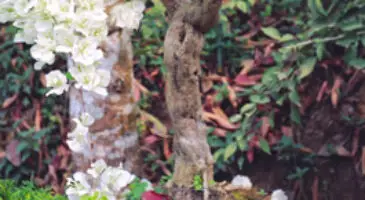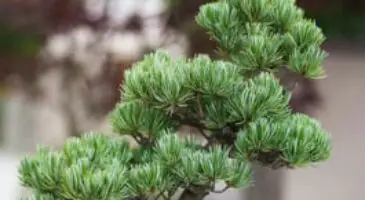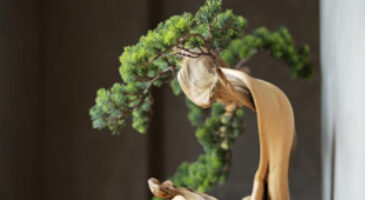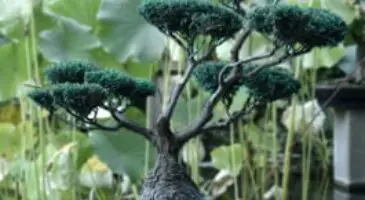Table of Contents
It is important to defoliate a Bonsai tree to keep them looking nice and to maintain their aesthetic semblance. However, that’s just a physical benefit of defoliating a Bonsai tree but the importance is far beyond that; asides from that, it improves the airflow rate through the tree’s system.
Unfortunately, many people do not know how to go about defoliating a Bonsai tree the proper way and if not done the right way, it may cause the Bonsai tree to have stunted growth or die prematurely. Here in this article, I will be discussing “How to defoliate Bonsai trees” in the most appropriate way to prevent you from the consequences that may arise from having little or no knowledge about the processes.
What is Defoliation in Bonsai
Bonsai defoliation is a method used by botanists or gardeners to style a Bonsai tree, such that a large or the whole part of the leaves and buds growing at the end of the shoot of a Bonsai tree is removed using Bonsai scissors. Within a few weeks or days, a new bud should start growing afresh.
Why defoliate a Bonsai tree
It is important to defoliate a Bonsai tree for two main reasons, to stimulate back-budding and slow down the growth rate of a branch that is growing too bigger. Other reasons for defoliation include;
- To allow light to penetrate through small leaves initially covered by bigger leaves.
- It allows deciduous color to produce better autumn colors.
- Bonsai defoliation leads to a reduction in the actual size of renewable leaves on Bonsai trees.
- It allows the bud in the crown to start to grow faster thereby increasing the smooth development of the Bonsai tree.
- Defoliating a Bonsai tree during summer will make Bonsai wiring easier. This wiring can remain on the Bonsai tree till the following spring.
Advantages of defoliating a Bonsai tree
If you defoliate your Bonsai tree, here are a few benefits from it.
- Defoliation increases airflow and encourages better sun penetration.
- Defoliation reduces the actual size of your Bonsai leaves so that they can look more proportional.
- It allows for scorched leaves to be removed, thereby creating an avenue for stronger leaves to grow.
What Bonsai can be defoliated
You can defoliate all types of Bonsai trees. What is important to note when defoliating a Bonsai tree is appropriate timing to have the desired result.
When to defoliate a bonsai trees
The best time to defoliate most Bonsai trees is June because, during this time, the tree will have sufficient time to develop new leaves in preparation for the next winter season.
If possible, you should avoid defoliating any Bonsai tree species during their sleeping seasons ( fall, spring, and winter). Therefore, June which is usually their active season (when they start to grow) is the best time to defoliate a Bonsai tree.
Some Bonsai species that are best defoliated around June include Trident Maple bonsai, Crabapple bonsai, Hornbeam bonsai, and Fuchsia bonsai. Although June is usually not the best defoliation time for all Bonsai trees. For some Bonsai trees like Privet bonsai, Oak bonsai, Hawthorn bonsai, Chinese Elm bonsai, and Fig, May is the appropriate time.
How to defoliate Bonsai
Pre-defoliation stage
To ensure hitch-free defoliation, there are some important factors to be considered before you start to defoliate a Bonsai tree. Some of these factors include;
Health
Before you defoliate any species of the Bonsai tree, you must first consider how healthy and vibrant the tree is. Defoliation will reduce the ability of a tree to grow, as most trees make use of their leaves in conjunction with their root system to accumulate nutrients, moisture, and oxygen, through photosynthesis which stimulates their growth. Defoliation causes shock within the tree’s system, and as a result, if you are working on an unhealthy tree, defoliation could kill it.
Therefore, you should run a proper check on the tree to determine its health status because the process of defoliation will further deteriorate the health of the tree regardless of its status. Defoliation of a weak tree should be delayed until its leaves, bud, and stems become stronger.
Tools
Although you easily can cut through a tree’s bud and leaves with your fingers, defoliation is best carried out with a pair of Bonsai or pruning scissors. This is to ensure that a clean cut is achieved to accelerate the healing process. Also, you must ensure that the Bonsai or pruning scissors used stays clean before and after use by applying antiseptics like rubbing alcohol and hydrogen peroxide. This will help to prevent the transmission of bacteria between cut wounds.
Timing
You should avoid defoliating a Bonsai tree during these seasons; fall, spring, and winter. This is because, during this period, most Bonsai trees are inactive and wouldn’t respond well to defoliation. You should delay your Bonsai defoliation till summertime because Bonsai trees are more active during this period. Although not all Bonsai trees ate best defoliated during this period (refer to the previous section for more details).
Defoliation stage
Bonsai defoliation can be carried out in two major ways, namely; partial defoliation and complete defoliation. Read details below to help decide which is best for your Bonsai tree.
Partial defoliation
I said earlier that defoliating a Bonsai tree will create a shock within the tree’s system. This method will help reduce the impact of the shock on the tree by spreading it through the growing seasons. The process of partial defoliation usually begins in May and is completed towards the end of August. This process allows for a certain portion of the leaves to be removed while others remain to facilitate the continuation of photosynthesis during defoliation.
Partial defoliation process
- You should begin the process by cutting off the larger leaves usually found around the tips of the branch. This will allow lights to reach smaller leaves which will stimulate their growth.
- This process should be repeated each growing season as these larger leaves are bound to be replaced by smaller leaves towards summer ending.
- Place the defoliated Bonsai tree where it will be exposed to sunlight and provide it with adequate water for quick recovery.
Complete defoliation
This method involves the complete removal of every leaves on the Bonsai tree. This process is best done when the new leaves have completely hardened off. New leaves start hardening off when the color of the leaves starts to change from green to shiny, tough, and darker green.
Complete defoliation process
- Start by clipping the leaves at the base of the tree, without touching the stems (They will dry out by themselves when new buds start to grow)
- Place the defoliated tree in a place with a limited supply of sunlight and to be watered less frequently as there are no more leaves to be nourished.
How to defoliate Bonsai trees in pot
Follow the steps below to guide you through the processes involved in defoliating a Bonsai tree in a pot.
- Check whether you have some weeds growing inside your Bonsai pot or whether you have dead leaves on the tree. If you have any, remove and dispose of them so they don’t disrupt the growth of your Bonsai tree.
- All crossed and broken beaches should be trimmed to prevent the transmission and prevent your tree from pest and disease infection.
- Trim down any twig growing beyond 3-4 nodes if the tree doesn’t grow too big to encourage new growth.
- Defoliation must be done during summer.
How to defoliate Fiscus Bonsai
Follow the instructions provided below for information on how to defoliate a Fiscu Bonsai tree.
- Cut off leaves using a leaf cutter or twig shear without touching the stems.
- You can cut entire leaves or just the leaves at the top section depending on what you aim to achieve.
How to defoliate Maple Bonsai
Maple Bonsai defoliation is necessary to help increase the flow of air through its system. Follow the simple guide provided below for instructions on how to go about it.
- Cut off leaves with shears or a tree cutter.
- The cut should be made on the petioles (they are the tiny stalks that connect the leaves and the stem).
- The remaining Petioles should be left untouched as they will wither and die by themselves.



